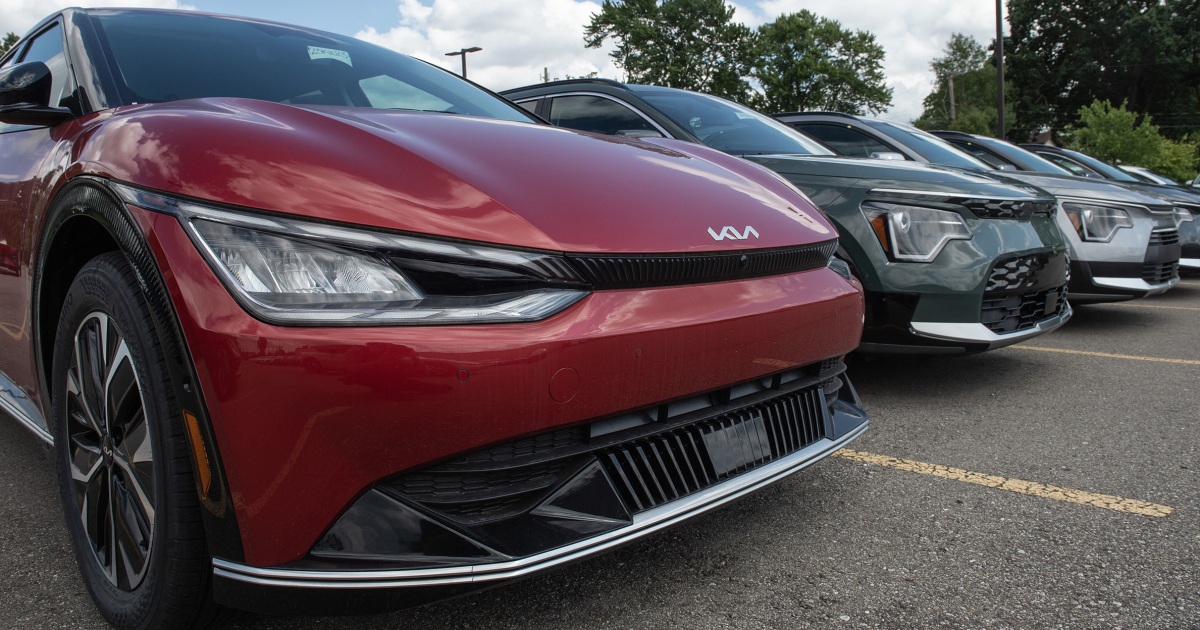The Current EV Market Landscape
There are plenty of reasons not to buy an electric vehicle in 2024: Auto loan rates are high. Despite a recent wave of discounting, many EVs remain pricier than gas-burning cars. And an incomplete network of sometimes glitchy chargers has stoked drivers’ “range anxiety” about running out of juice.
The Prospective Growth in EV Sales
But while the all-electric market is slowing, sales are forecast to keep rising. Cox Automotive expects EVs to comprise 10% of the United States’ vehicle market by the end of the year, up from 7.6% last year — when domestic sales hit a record 1.2 million — and 5.9% in 2022. And first-time EV adopters are still powering the expansion, with LexisNexis Risk Solutions telling NBC News that 3 in 4 new EVs are driven by people switching from a combustion-engine vehicle.
What to Consider When Buying an EV
Here’s what to know if you’re considering buying this year.
Tax Credits and Their Impact on EV Purchases
Car shoppers can still expect to be rewarded for going electric, thanks to tax breaks from the Inflation Reduction Act, but the rewards won’t be as widespread.
The law’s tax incentives are limited to EVs whose batteries aren’t substantially built in certain foreign countries, particularly China, or with minerals sourced there. The number of models eligible for the full federal tax credit of $7,500, or partial $3,750 credit, shrank from 43 last year to fewer than 15 that comply with criteria on the books currently. The punted models include popular picks like the Tesla Model 3 and the Nissan Leaf.
And income caps still apply: Individuals making over $150,000 annually or couples bringing in $300,000 qualify for the credits, which stop at electric sedans over $55,000 and SUVs and trucks over $80,000.
A narrower selection of EVs eligible for tax incentives could push more consumers toward leasing, said Jay Turner, an environmental studies professor at Wellesley College and author of “Charged: A History of Batteries and Lessons for a Clean Energy Future.”
Many of the excluded vehicles still qualify for discounts when leased, he said, because the U.S. Treasury considers leasing an EV a commercial transaction, exempting the vehicles from some IRA rules.
One “pretty major” change taking effect this year, Flores noted, is that consumers can now apply their full federal tax credit right away at dealerships, rather than having to wait to file their taxes to receive it.
Affordable Pricing and Local Incentives
Auto experts said the mix of federal and state incentives, at a time when many EV prices are falling, could allow customers in some places to drive a new or used EV off the lot for as little as $10,000 this year.
Edmunds, an online car shopping resource, put the average price of a used EV at $50,000 as recently as December 2022 but now estimates it at about $37,000.
This year may also be a better time to go pre-owned, said Turner. “Normally we think that EVs are just for people who are pretty well off. But the tax incentives, especially for used EVs, are definitely opening up the market to more consumers,” he said.
The Future of EV Range and Infrastructure
On Thursday, the Biden administration announced $623 million in new grants to fund 47 EV charging projects in 22 states and Puerto Rico. The move was a tacit acknowledgment of the need to upgrade and expand a charging network whose limited extent and reliability have turned off many current and would-be EV drivers.
J.J. McCorvey is a business and innovation reporter for NBC News.
“`

